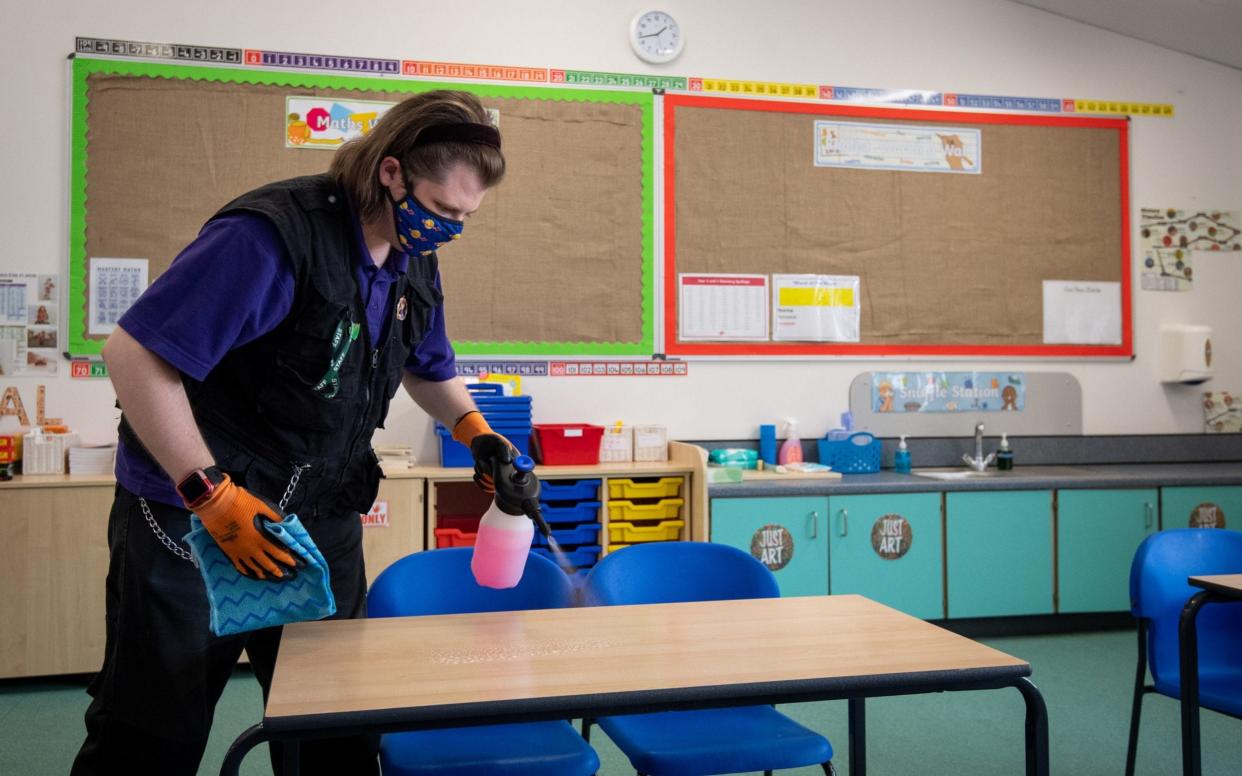Teaching unions criticise Government over 'last-minute' guidance on schools reopening


Teaching unions have criticised the Government for introducing new guidance on the reopening of secondary schools just days before millions of pupils are due to return to classes.
The Department for Education (DfE) on Friday night published its guidance about how schools in areas with significant rises in Covid-19 cases could be put on a “rota system” to limit the number of people pupils come into contact with.
Meanwhile, teachers and students may need to wear face coverings in communal areas. But, union leaders expressed their dismay that the guidelines were announced at the last minute, adding that many head teachers would struggle to implement the rules at such short notice.
Paul Whiteman, general secretary of school leaders’ union NAHT, said the timing of the guidance was “reprehensible”. “It was obvious weeks ago that lockdown advice was necessary,” he said.
“The Government’s decision to publish this at 9pm on the Friday of the Bank Holiday weekend before most schools are due to return is nothing short of reprehensible and demonstrates a complete lack of regard for the wellbeing of school leaders and their teams.
“The decision confirms the Government simply does not understand the commitment and professionalism of school leaders who will feel compelled to act immediately.”
Geoff Barton, general secretary of the Association of School and College Leaders, said he felt a “weary, resigned sense of inevitability” at the timing of the announcement.
Asked how teachers would feel, he told BBC Radio 4’s Today programme: “I think, probably, the most polite response… is a weary, resigned sense of inevitability that here we are again, right at the last minute with something that we have been accused of expressing treachery in asking for – where’s the plan B in case of local lockdown – at last it has arrived.”
Meanwhile, Labour’s shadow education secretary Kate Green said the timing of the guidance “beggars belief”.
She added: “The Government’s incompetence is insulting to the school leaders and teachers who have worked so hard over summer to prepare schools for children to return.”
Making the announcement, Education Secretary Gavin Williamson said any changes to school attendance “will only ever be an absolute last resort”.
He added: “However, it is important that both Government and schools prepare for a worst case scenario, so this framework represents the sensible contingency planning any responsible government would put in place.”
Robert Halfon, Tory chairman of the Commons Education Select Committee, acknowledged that guidance being issued a few days before children return to classrooms is “incredibly difficult” for teachers.
“Well, I don’t know why that decision was made, I’m not in Government. It’s better that it’s there,” he told BBC Breakfast.
“I appreciate that it is incredibly difficult for teachers and support staff because it’s just come out.
“Maybe the Government had a late last-minute science advice from the World Health Organisation, I don’t know, but the important thing is that advice has been welcomed.”
Initially, the new guidance had said that if a single case of coronavirus was confirmed, every pupil in the affected person’s year group - or “bubble” - may have to quarantine for two weeks. However, this passage was removed by the DfE shortly after publication on Friday night.
Asked about the paragraph being removed from the guidance shortly after it was issued, Mr Halfon added: “Clearly these things shouldn’t happen and mistakes obviously have been made, and been rectified, but the important thing is that the guidance is right.
“And the Department for Education should be doing everything possible to help schools to work through the guidance and help children return to school.”
New guidance promotes rota system
A “rota system” limiting the number of pupils going to secondary schools at any one time could be used for local lockdown zones, while teachers and students may need to wear face coverings in communal areas, according to the new Government guidance.
The staggered approach will reduce how many people students come into contact with, helping to break transmission chains by giving enough time at home for symptoms to become apparent, said the DfE.
If a coronavirus case is confirmed, every pupil in the affected person’s class - or “bubble” - may have to quarantine for two weeks, it adds.
The lengthy guidance said schools should base their plans on a four-tier system, and the extra measures for secondary schools should kick in at the second tier.
It says: “Schools should ideally operate a rota system that means pupils spend two weeks on-site followed by two weeks at home.
“However, schools can choose to operate a one-week rota (so, five days on-site, followed by nine days at home) if this is necessary for the effective delivery of the curriculum.”
The guidance adds: “In all areas of national government intervention, at schools where students in year seven and above are educated, face coverings should be worn by adults and pupils when moving around the premises, outside of classrooms, such as in corridors and communal areas where social distancing cannot easily be maintained.”
The DfE said any suspected coronavirus cases will need to self-isolate and get tested.
The guidance continues: “If a case is confirmed, local public health officials will work with the school to take appropriate measures, including asking all members of a pupil’s bubble to isolate for 14 days and access remote education while other pupils continue attending.”
The guidance does not apply to primary school children, as scientific evidence indicates they “play a limited role in transmission”.
All schools remain open at tier one, while tiers three and four mean more stringent restrictions such as closures to all but pupils in vulnerable groups or children of key workers.

 Yahoo News
Yahoo News 
